John Thomas Cooper, his family and descendents
Bottesford life and emigration
By Don Roach, edited by Neil Fortey
Introduction
Mr Don Roach of Victoria, Australia, has been investigating his family roots in Bottesford. This article draws together a body of information about Don’s great-grandfather, John Thomas Cooper, and his family and descendents.
John Thomas Cooper was born in London, and came to Bottesford in the 1860s to learn the tailoring trade from his uncle, Robert Edwards, whose premises were on Queen Street. John Thomas served his apprenticeship and in time became a master tailor, with his own business in Chapel Street, round the corner from his uncle. He was also a long-term member of the Belvoir Volunteers, attaining the rank of Lance-Sergeant. The Belvoir Volunteers were a local militia established under the aegis of the Duke of Rutland during the Napoleonic wars and then maintained up to the outbreak of the 1st World War. A good musician, John Thomas Cooper was the Company bugler and also trained the boys in the bugle band, which may have been connected to the Volunteers. In addition to being a musician, John Thomas Cooper was a member of the choir of St Mary’s, Bottesford.
The Funeral
John Thomas Cooper was buried at St. Mary’s, Bottesford, on July 2nd, 1904, aged 46. The Grantham Journal recorded that he had been ill for some time, and had complained of pain in his head shortly before his death.
He had the unusual distinction in Bottesford of being given a military funeral. The funeral, led by the Rector, Canon William Vincent-Jackson, assisted by Rev. E.J. Goldsmith, was well attended. The Belvoir Volunteers were represented by Lieutenant L. Beasley, Quartermaster-Sergeant Ratcliffe, Sergeant-Inst. Williams and Colonel-Sergeant Kettleborrow, along with the rank and file and young members of the bugle band. John Thomas Cooper had also been a member of the church choir, and his coffin was carried by four choristers, J. Martin, F. Norris, T. Rawdin and L.H. White. At the conclusion of the service, bugler Mr Philip Sutton sounded the ‘Last Retreat’.
The inscription on his gravestone in Bottesford churchyard reads:
“In Loving Memory of Dad, John Thomas Cooper
Died 2nd July 1904
Aged 46 Years
Also of Brother Harold
Killed in Action in France 1917
Aged 34 years
Erected by Dick and Alice”
Thomas Harold Cooper, the second son of John Thomas and Mary Cooper, lost his life during the First World War. The stone was erected by his older brother John Richard Cooper and his wife Alice, during the time he served in the First World War, from 1916 to 1919.
Census records of John Thomas Cooper and his family
John Thomas Cooper is first recorded in Bottesford in the 1871 census when, along with his younger sister Mary E. Cooper, he lived with their uncle and aunt, Robert and Elizabeth Edwards, who had a Tailors & Drapers business in Queen Street, Bottesford. John Thomas Cooper was recorded as a tailor’s apprentice, 15 years old, born in St George’s ecclesiastical parish in London (Middlesex).
Robert Edwards was 58; Elizabeth Edwards was 54. The census states that Robert Edwards was born in Long Bennington, Lincolnshire (some seven miles from Bottesford). It may be that his sister had married a man called Cooper, and that the couple had gone to live in London where they had two (or more) children, but this is conjecture.
The 1861 Census indicated that the Edwards had had a son, William, but John Thomas and Mary E. Cooper were not recorded in Bottesford at this time, and were presumably with their parents in London. William Edwards is not recorded in the 1871 Census for Bottesford, and had probably left home or died by this date. John Thomas and Mary E’s parents may also have died between 1861 and 1871, and their children come to live with their aunt and uncle in Bottesford. By 1871, John Thomas has become an apprentice in his uncle’s workshop.
At the 1881 Census, Robert and Elizabeth Edwards, now 68 and 66 respectively, still had their tailoring and drapery business. Their house is listed as being at the 20th house in Queen Street (note: this would not have been its postal address so much as the twentieth house visited by the enumerator in whatever order he worked along the street). John Thomas Cooper, now aged 25, also lived here and was described as being a tailor, no longer an apprentice, but his sister Mary E. Cooper is not recorded, probably because she had married by this date. Apprenticeships normally ran for seven years starting at the age 14. There were two apprentices living there, John J. Rimmington (18), and John Carr (16), both from Bottesford. John Thomas Cooper married Mary Guy in 1881, presumably after the date of the census.
By 1891, John Thomas Cooper (33) was a tailor in his own right, living at house 5 in “Baker Street”, Bottesford, with his wife Mary, also aged 33, who was born in Bottesford. They had three children, John R (9), Thomas Harold (6), and Rowland J (2). He also has two apprentices, William Green (16), from Heanor, Derbyshire, and Joseph Barry (15), from Nottingham. John Thomas was running his own business. The address is curious in that there is no “Baker Street” in modern Bottesford, and indeed this is the only place we have seen this street name used. However, judging from the other people listed as living there, it appears likely that it is what is more generally known as Chapel Street.
In 1901, the family had moved to house no.6 in Queen Street, where John Thomas (43), described as having been born in Knightsbridge, London, and wife Mary (43) lived with four of their children, Thomas Harold (16), who was then employed as a domestic gardener, Rowland S. (11), Edith Sarah (8) and Constance (4). John Thomas’s age indicates that he was born around 1858, confirming that he would have been 46 at his death in 1904. The eldest son, John Richard Cooper (aged 19 in 1901) was not listed.
Mary Cooper
John Thomas Cooper’s wife Mary was born Mary Guy in 1857, daughter of Sarah Guy of Bottesford. Sarah Guy was daughter of canal labourer Andrew Guy and his wife Sarah, both of Bottesford.
John Richard Cooper
John Richard Cooper was born in 1881, and died between 1944 and 1947, possibly in Bloemfontein, South Africa. He was educated at Sedgebrook Grammar School, and was a teacher for a short time at St. Luke’s School in Nottingham before joining the Army Ordnance Corps in August, 1899. In his Attestation papers of August, 1899, his age is given as 18 years and 4 months, implying that he was born in the month his parents married. His service papers also show he was a member of the 1st VB Leicester Regiment (“VB” probably stands for Volunteer Brigade).
He served in the Imperial Forces in the South African War (the Boer War) from 1900 to 1902, then stayed on in South Africa at the conclusion of hostilities, joining the Orange River Company, and opened the first Magistrate’s Court at Brandfort in 1904. He spent all his working life in South Africa. He married Alida (or Alice) Dorothea Van De-Spey. They had three children, two of whom were named Charlotte and Richard.
He returned to England in 1916 with Alida and the children, and then served for two years in the First World War. The family returned to South Africa in 1919. It is not clear where they lived during this time in England, but Alida was a witness at Nan’s (Edith Sarah Cooper’s) wedding in 1918. They returned again in 1938, for a holiday. He rose to be manager of the Native Administration Department of the Bloemfontein City Council, and died in 1945 in South Africa, aged 64, some months after retiring.
Thomas Harold Cooper
Thomas Harold Cooper, born 1886, died on 2nd December, 1917. He served with the 2nd Battalion, Lincolnshire Regiment, rank Lance-Corporal. His first experience of action was in the Balkans on 18th July, 1915. He is commemorated at Tyne Cot Military Cemetery, Belgium. He was awarded the Allied Victory Medal and the 1915 Star.
We are not aware that he ever married. He does not appear in the 1911 census for Bottesford, possibly because he was already in the army.
Rowland S. Cooper
Rowland S. Cooper was born in 1889, died in 1949. He emigrated to Western Australia in 1911.
Edith Sarah Cooper
Edith Sarah Cooper (‘Nan’) was Don Roach’s grandmother. She was born in 1893, and died in 1978 in Australia. According to Don’s mum, Nan was working in a post office when his grandfather was at a military hospital recovering from being gassed. However, Joseph Granari’s military records (see below) suggest that it is more likely that they met when he was undergoing military training at Grantham during the summer of 1917. The story goes that they met when he was collecting the mail. They eventually married at Bottesford on 18/11/1918, when Joseph was on a short spell of home leave. They returned to Melbourne in 1919, where Joseph was demobbed.
Edith occasionally talked about Bottesford, Grantham and her siblings. Don recalls her telling me that she was young when her father died and that her mother was just about totally blind. She took the loss of her brother Harold in 1917 quite hard.
Edith returned to England with her first daughter, Nita Constance, in 1922. She was pregnant with Don’s mother, Glenwys Mary Granari, at the time. His mum’s birth certificate shows that she was born at Belvoir Road, Bottesford, on February 7th, 1923. They lived with his great grandmother (Mary Cooper), who was blind, until they returned to Australia around 1924.
Constance Elizabeth Cooper
“Connie” was born in 1896 and died in 1979. She married John Pearce of Woolsthorpe-by-Belvoir, probably in 1929. According to an article in the Grantham Journal she was still caring for her mother at the time she married. She had served in the WRAF during the latter part of the First World War, and then gave service to the British Legion. The WRAF was founded in 1918 and then disbanded in 1920 (the name wasn’t used again until 1949, when it was revived as a new name for the WAAF). Her husband had also “completed his colour service with the Royal Air Force”. Her death was registered in Grantham.
Joseph Nino Granari
Joseph Granari, born on the 16th of June, 1893, and was a native of Onelgalia, near Genoa in Italy. He emigrated to Australia in 1908, and became a naturalised Australian. Australian First World War Records on the internet provide a good deal of information about Private Joseph Granari. He joined up on 24/1/1917, a 25 year old single labourer living at Colac, Victoria. His next of kin was Mary Granari of Onelgalia, near Genoa in Italy, his father deceased. [Editor’s note – The whereabouts of ‘Onelgalia’ is proving difficult to establish. However, it may be ‘Oneglia’, which is part of the port town of Imperia on the Ligurian coast west of Genoa.]
He was assigned to the 7th RFTS 39th Battalion, embarked from Melbourne on 19/2/1917 aboard the troop ship “Ballarat”, then in July 1917 he was at training camp in Grantham, finally departing on 26/10/1917 from Folkestone for France, and joined the 15th Machine Gun Company on 8/11/1917. On 7/5/1918 he was taken ill with influenza and sent to hospital in Rouen, and went to develop bronchitis. On 12/9/1918 he rejoined, with the 5th Machine Gun Battalion. However, he suffered continued to suffer from Bronchitis while he remained in France through into 1919, apart from leave in London 19/11/1918 to 3/12/1919. he finally left France, reaching Weymouth on 8/5/1919.
The Australian records also include his marriage record, which states that 25 year old Pte 3069 Joseph Granari of the 5th M.G.Bn., son of Joseph Granari, a hotel keeper, married Edith Sarah Cooper of Bottesford at Bottesford parish church on 18/11/1918. They were married by Rector Frank Walford. The couple departed for Australia aboard the “Ceramic” on 9/8/1919, disembarking on 27/9/1919.
Glenwys Mary Roach (nee Granari)
Don’s mother’s maiden name was Glenwys Mary Granari. She was born on February 7th, 1923, at an address in Belvoir Road, Bottesford, the youngest daughter of Joseph Nino Granari.
In December, 1922, Don’s grandmother, Edith, arrived in England. She had mum’s older sister Nita Constance, then about 18 months old, with her and was eight months pregnant with my mother. They stayed in Bottesford and returned home to Australia in May 1924.
Apparently when Don’s grandparents married, his grandfather promised my grandmother she could go home for a holiday, though during all the time she was away he stayed in Australia. Interestingly, his mother mum recalled that Nan said that she never felt like she was really accepted by the locals during her stay. They lived in High Street. Mum also recalls the story that her grandmother Mary used to carry her around the house including up and down the stairs. Nan was rather stressed by this as Mary’s eyesight was very poor and she was concerned she would fall hurting both of them.

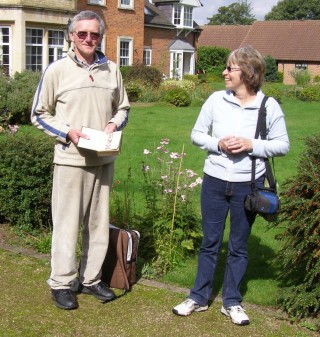
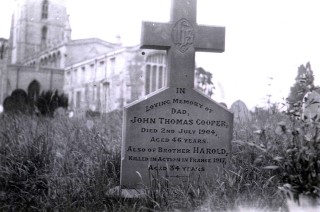
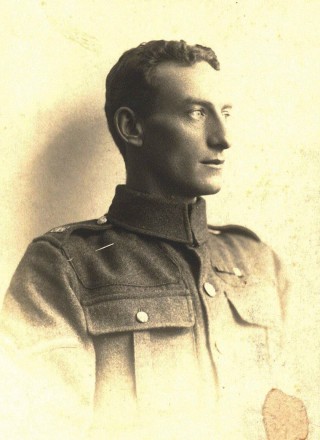
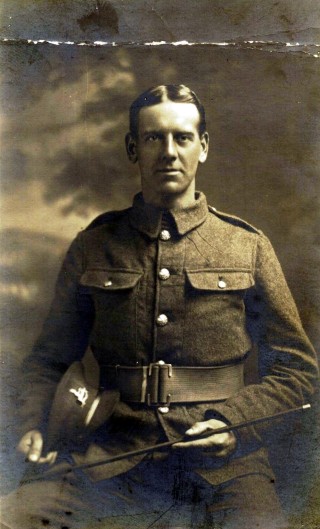
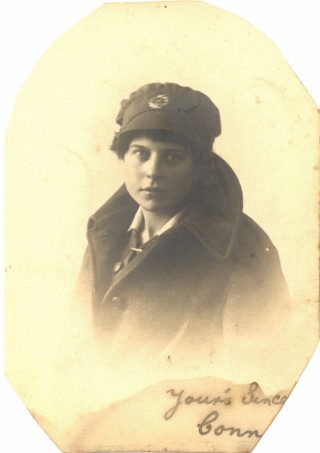
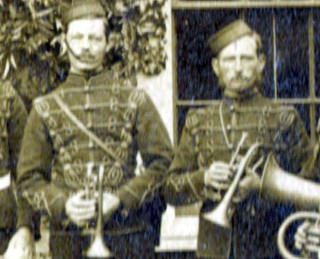
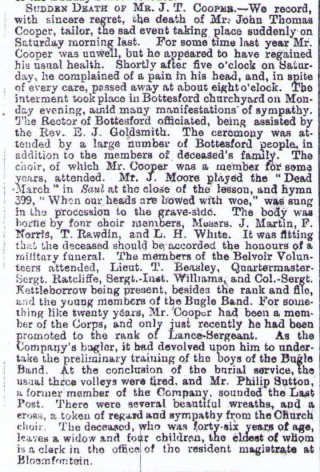
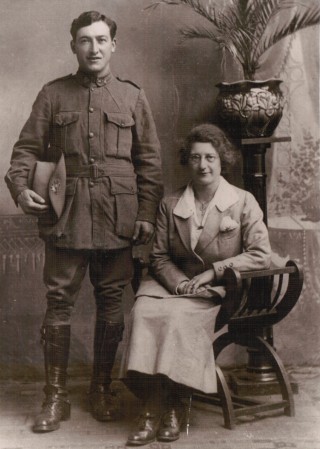
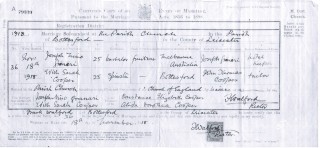








No Comments
Add a comment about this page